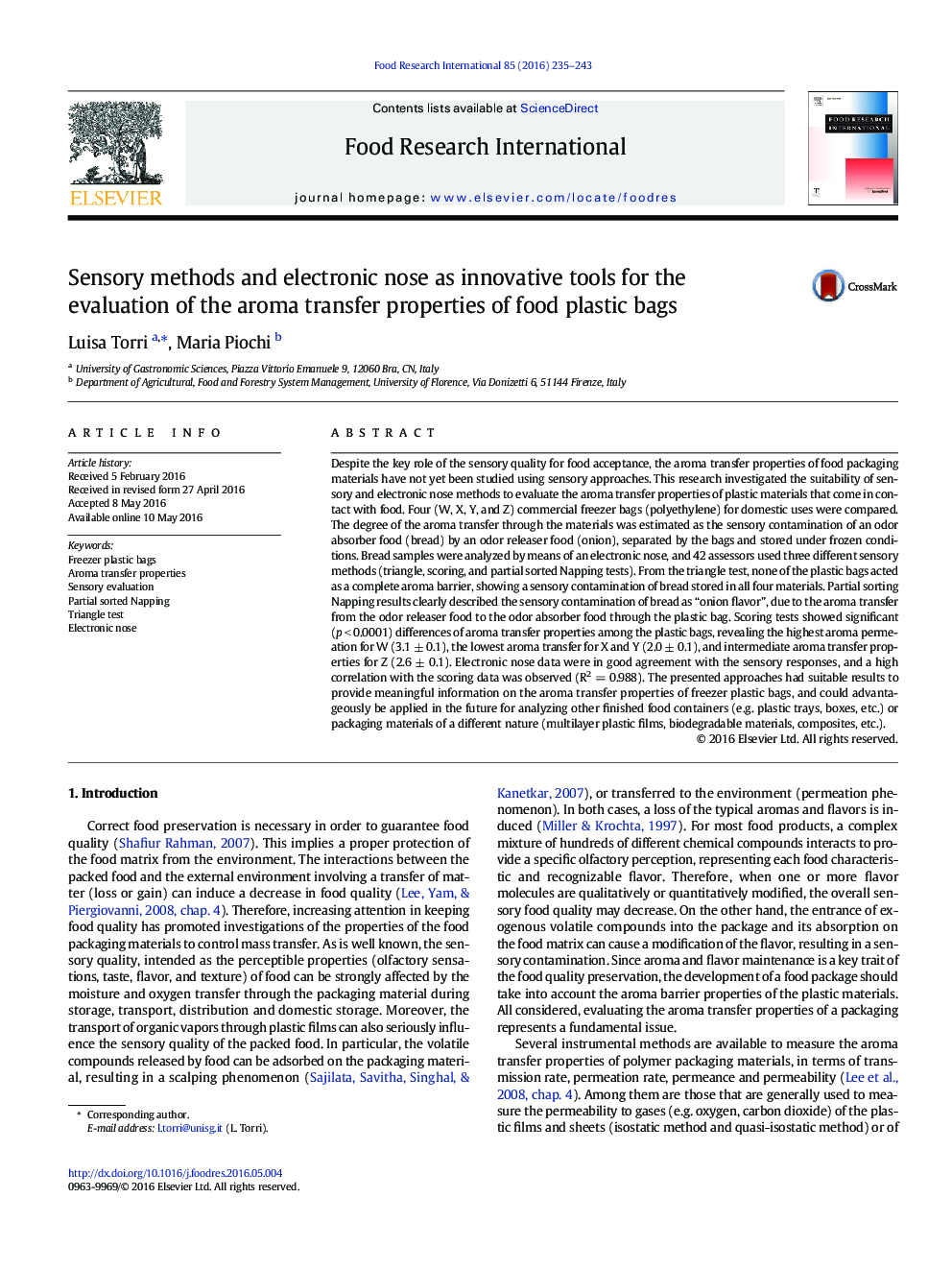| کد مقاله | کد نشریه | سال انتشار | مقاله انگلیسی | نسخه تمام متن |
|---|---|---|---|---|
| 4561057 | 1628463 | 2016 | 9 صفحه PDF | دانلود رایگان |
• The aroma transfer properties of plastic materials were assessed using new methods.
• The used odor releaser/absorber system was suitable to study the aroma transfer.
• Sensory tests showed performance differences among four freezer plastic bags.
• The scoring test effectively exhibited different levels of sensory contaminations.
• Electronic nose responses were correlated with the sensory results.
Despite the key role of the sensory quality for food acceptance, the aroma transfer properties of food packaging materials have not yet been studied using sensory approaches. This research investigated the suitability of sensory and electronic nose methods to evaluate the aroma transfer properties of plastic materials that come in contact with food. Four (W, X, Y, and Z) commercial freezer bags (polyethylene) for domestic uses were compared. The degree of the aroma transfer through the materials was estimated as the sensory contamination of an odor absorber food (bread) by an odor releaser food (onion), separated by the bags and stored under frozen conditions. Bread samples were analyzed by means of an electronic nose, and 42 assessors used three different sensory methods (triangle, scoring, and partial sorted Napping tests). From the triangle test, none of the plastic bags acted as a complete aroma barrier, showing a sensory contamination of bread stored in all four materials. Partial sorting Napping results clearly described the sensory contamination of bread as “onion flavor”, due to the aroma transfer from the odor releaser food to the odor absorber food through the plastic bag. Scoring tests showed significant (p < 0.0001) differences of aroma transfer properties among the plastic bags, revealing the highest aroma permeation for W (3.1 ± 0.1), the lowest aroma transfer for X and Y (2.0 ± 0.1), and intermediate aroma transfer properties for Z (2.6 ± 0.1). Electronic nose data were in good agreement with the sensory responses, and a high correlation with the scoring data was observed (R2 = 0.988). The presented approaches had suitable results to provide meaningful information on the aroma transfer properties of freezer plastic bags, and could advantageously be applied in the future for analyzing other finished food containers (e.g. plastic trays, boxes, etc.) or packaging materials of a different nature (multilayer plastic films, biodegradable materials, composites, etc.).
Figure optionsDownload as PowerPoint slide
Journal: Food Research International - Volume 85, July 2016, Pages 235–243
